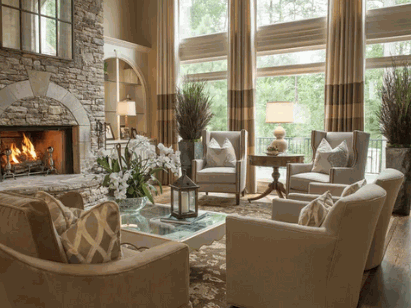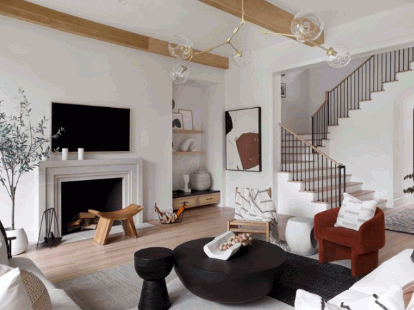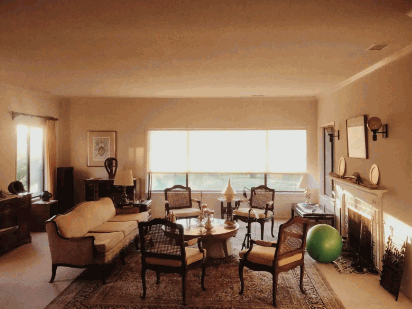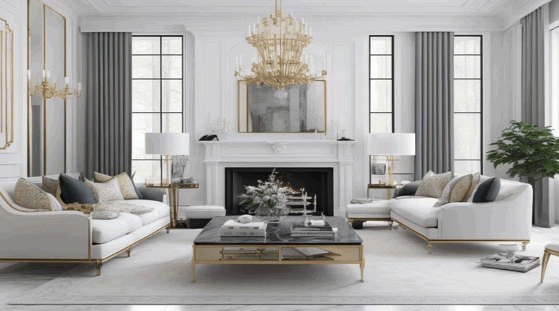The world of interior design is vast and diverse. Traditional and modern styles are a comparison often made. They both have charm but differ in aesthetics, functionality, and vibe.
The traditional style has a timeless classic feel. It takes inspiration from the 18th and 19th centuries. Ornate patterns, detailed elements, and rich textures are included. Dark wood furniture, luxurious fabrics such as velvet and silk, and antique accessories are common. The color palette is usually warm.
The modern style embraces minimalism and simplicity. It originated in the 20th century and focuses on clean lines, open spaces, and functionality. Sleek furniture, smooth surfaces, and uncluttered layouts feature. Neutral or monochromatic colors are used for a sense of harmony.
The decoration is a noteworthy difference between traditional and modern. Traditional interiors often show elaborate details. These can make the space feel busy and overcrowded. Modern design relies on minimal decoration and open spaces for visual flow and relaxation.
The traditional style has warmth and nostalgia with fabrics and accents. Modern style has sleekness and sophistication with clean lines and functional furniture.
What Is Traditional Style?
To understand what makes traditional style unique, dive into the world of traditional style and explore its characteristics. This section offers a glimpse into the features that define traditional style, providing insights into its timeless appeal and rich heritage.
Characteristics Of Traditional Style
Traditional decor is all about elegance and timelessness. It features detailed craftsmanship, rich textures, and ornate embellishments. Here are its key characteristics:
- Rich colors: Expect warm shades of red, brown, green, and gold to create a cozy atmosphere.
- Ornate details: Decorative moldings, trim work, and carved wood elements add depth.
- Symmetry: Rooms are typically symmetrical with matching furniture pieces around a focal point.
- Antique furniture: Look for curved lines, plush upholstery, and intricate designs.
- Classic patterns: Florals, damasks, toile, and stripes are timeless.
- Formal lighting fixtures: Chandeliers, wall sconces, and table lamps with elaborate designs.
- Refined accessories: Fine china, crystal vases, porcelain figurines, and oil paintings.
- Comfort: Soft fabrics like velvet or silk for upholstery ensure relaxation.
Dig Deeper: What Are The Characteristics Of Traditional Style In Interior Design

What Is Modern Style?
To understand modern style with its characteristics, delve into this section. Discover the defining features that set it apart from traditional style, bringing a fresh and contemporary aesthetic to interiors. Uncover the key sub-sections exploring the characteristics of this style, allowing you to easily navigate and grasp its essence.
Characteristics Of Modern Style
Modern style is all about simplicity, clean lines, and minimalism. Its four main points are minimalism, open spaces, natural light, and mixing materials. Minimalism means getting rid of details and clutter to have an uncluttered look. Open spaces are an important part of this style, allowing for free movement between different areas. Natural light is also important, using large windows to bring the outdoors in. Mixing materials such as glass, metal, wood, and concrete creates texture and depth. Additionally, eco-friendly practices are part of the modern style.
The history of modern style can be traced back to the 19th-century art movement called “Art Nouveau“. This movement sought to break away from traditional art forms using natural forms as inspiration. The modern style evolved over time to become a symbol of sleekness and simplicity that is seen in architecture, interior design, and everyday objects.

Comparison Between Traditional Style And Modern Style
To better understand the comparison between traditional style and modern style, delve into the design elements, color palette, furniture and decor, and functionality and practicality. Explore the distinct characteristics and approaches of each style, allowing you to make informed decisions when it comes to your home’s aesthetics and functionality.
Design Elements
Let’s delve deeper into what distinguishes traditional style from modern style.
Traditional Style: Earthy tones, classic fonts, ornate and decorative layouts, detailed and intricate imagery.
Modern Style: Bold colors, contemporary fonts, clean and minimalist layouts, and simple and abstract imagery.
Plus, traditional style incorporates intricate patterns and motifs inspired by historical periods, while modern style adopts minimalism and simplicity with clear lines and a lot of white space.
It’s interesting to note that design elements have changed over time. Traditional style takes cues from cultures like the Greeks, Romans, or Victorian eras, which reflect their architectural heritages. On the other hand, modern style came about as a form of rebellion against the elaborate decorations of the past.
In conclusion, understanding these design elements is key to recognizing traditional and modern styles. Selecting the right color palette, typography, layout, and imagery can make a significant difference in the overall visual appeal of a design. Thus, designers must carefully consider these elements to accurately express the desired aesthetic tone.
Color Palette
Traditional style and modern styles have distinct color choices. The traditional style focuses on neutrals, like beige and brown. Whereas modern style goes for bright hues, such as blue and red.
For a unique look, consider adding complementary or contrasting colors. These can bring visual interest and make your design stand out.
The colors you choose can evoke certain emotions. So don’t miss the chance to captivate and leave an impression. Select your colors wisely and let your creativity shine.
Furniture And Decor
Furniture and decor are key to creating style. Traditional or modern styles bring different vibes to a room. Let’s break down their unique characteristics.
| Traditional Style | Modern Style |
|---|---|
| Classic designs, intricate details, rich colors | Clean lines, minimalist aesthetics, neutral tones |
| Ornate furniture with carvings and embellishments | Sleek and streamlined furniture |
| Luxurious fabrics like velvet and silk | Natural materials such as wood and leather |
| A formal atmosphere with elegant pieces | Casual ambiance with functional furniture |
Traditional style has a sophistication, reminding us of the past. Modern style is simpler, creating a contemporary atmosphere.
Functionality And Practicality
Functionality and practicality are essential when comparing traditional and modern styles. Cost, maintenance, and efficiency are key factors to consider. Let’s look at this with a visual.
The table below compares functionality and practicality between traditional and modern styles:
| Aspect | Traditional Style | Modern Style |
|---|---|---|
| Cost | 4 | 2 |
| Maintenance | 3 | 1 |
| Efficiency | 2 | 4 |
Traditional style homes usually have higher costs due to their elaborate designs and materials. Modern style homes have lower costs, usually featuring minimalistic designs.
Traditional-style homes need more upkeep due to their intricate details and ornamentation. Modern-style homes are simpler and need less maintenance.
Efficiency is another aspect to consider. Traditional-style homes may lack energy-efficient features that modern-style homes often have.
To sum up, modern-style homes offer better functionality and practicality at lower costs, with less maintenance and improved efficiency. If you want an efficient lifestyle, modern-style homes might be the way to go!

Conclusion
Traditional Style: Intricate carvings, ornate furniture, and embellished textiles are all key elements of traditional style. It brings grandeur and elegance with its detailed designs.
Modern Style: In contrast, modern design is known for its simplicity and functionality. Furniture with clean lines, neutral color palettes, and lightweight materials like linen or cotton are all hallmarks of modern style.
Differences: Traditional style is associated with opulence and a sense of history, whereas modern style emphasizes contemporary aesthetics and minimalism.
Tip: When mixing traditional and modern in a space, aim for balance by choosing key elements from each. This will ensure a cohesive design throughout.

